Warsaw, the capital and largest city of Poland, is a fascinating destination with a complex history. Once decimated during WWII, Warsaw has since been meticulously rebuilt and is now a thriving metropolis offering visitors a trendy arts scene, leafy parks, stately monuments, lively bars and restaurants, and more.
| Activity | Description |
|---|---|
| Explore the Old Town | Visit the UNESCO World Heritage Site with cobblestone streets, pastel-colored townhouses, Gothic churches, and the iconic Mermaid Statue. |
| See the Warsaw Rising Museum | An interactive museum detailing the Warsaw Uprising of 1944 with multimedia exhibits. |
| Stroll the Royal Route | A walk through important landmarks including St. Anne’s Church and the Presidential Palace. |
| See Warsaw From Above at the Palace of Culture and Science | View the city from the 30th-floor observation deck of this historic building. |
| Explore Łazienki Park and Visit the Palace on the Water | Tour a lush park with elegant palaces, mansions, and the Palace on the Water. |
| Tour Frederic Chopin Museum | A museum celebrating the composer with interactive exhibits and artifacts. |
| See Warsaw History in Miniature at the Museum of Warsaw | An interactive model and exhibits showing Warsaw’s history. |
| Wander the Vibrant Old Praga Neighborhood | Discover historic churches, bars, galleries, and Bohemian cafes in this gritty district. |
| Get Active in Pole Mokotowskie and Łazienkowski Park | Enjoy recreational activities in two large parks. |
| Explore Trendy Neighborhoods for Eats and Nightlife | Visit neighborhoods like Praga District and Saska Kępa for dining and nightlife. |
| Attend a Festival or Market | Participate in festivals like the Jazz on the Odra Festival and the Warsaw Film Festival. |
| Marvel at Wilanów Palace and Gardens | Tour this Baroque palace and its gardens. |
| Enjoy Pierogi at Traditional Milk Bars | Experience authentic dining at retro milk bars. |
| Tour the Warsaw Zoo | A zoo with over 4,000 animals and family-friendly activities. |
| See the Jewish History of Warsaw | Learn about the city’s Jewish history at various sites including the POLIN Museum. |
| Relax at a Riverside Beach Area | Unwind at urban beach areas along the Vistula River. |
From historical sights to modern attractions, here are 15 of the best things to do in Warsaw in 2024:
Explore the Old Town

Name and Location: Old Town of Warsaw, located in central Warsaw
History and Significance: Warsaw’s Old Town was rebuilt after WWII destruction to resemble the architecture from the 13th-18th centuries. This historic heart of the city is a UNESCO site.
What to Expect: Stroll beautiful, pedestrianized streets lined with burgher houses, galleries, cafés and restaurants. Don’t miss iconic sights like the Royal Castle, Market Square, and Barbican.
Visitor Information: Old Town is compact and walkable. Guided walking tours available. Accessible by metro and bus.
After being severely damaged during WWII, Warsaw’s picturesque Old Town was meticulously rebuilt to recreate its pre-war architecture. This historic area feels like something from a fairytale with its charming cobblestone streets, pastel-colored townhouses, Gothic churches, and medieval defensive walls.
A UNESCO World Heritage Site, the Old Town is filled with restaurants, cafes, shops, and attractions. Highlights include Castle Square, St. John’s Cathedral, the Royal Castle, and the iconic Mermaid Statue.
See the Warsaw Rising Museum

Name and Location: Warsaw Rising Museum in central Warsaw
History and Significance: This museum is dedicated to the Warsaw Uprising of 1944 against Nazi occupation during WWII. Interactive exhibits bring this history to life.
What to Expect: See artifacts, photos, films, and listen to recordings about the struggles of life during the uprising. Don’t miss the moving visual recreations of city ruins.
Visitor Information: Open daily 10am-6pm except Mondays. Admission ~20 PLN. Located in central Warsaw, metro accessible.
This modern interactive museum is a must-visit for understanding Warsaw and Poland’s 20th century history. Using a multimedia narrative, it chronicles the Warsaw Uprising of 1944 when the Polish resistance fought and ultimately lost against Nazi occupation.
The exhibits showcase artifacts, films, photos, and audio recordings that capture the desperate struggle of civilians against a brutal occupying force. The museum provides an immersive experience into a defining period for Warsaw.
Stroll the Royal Route
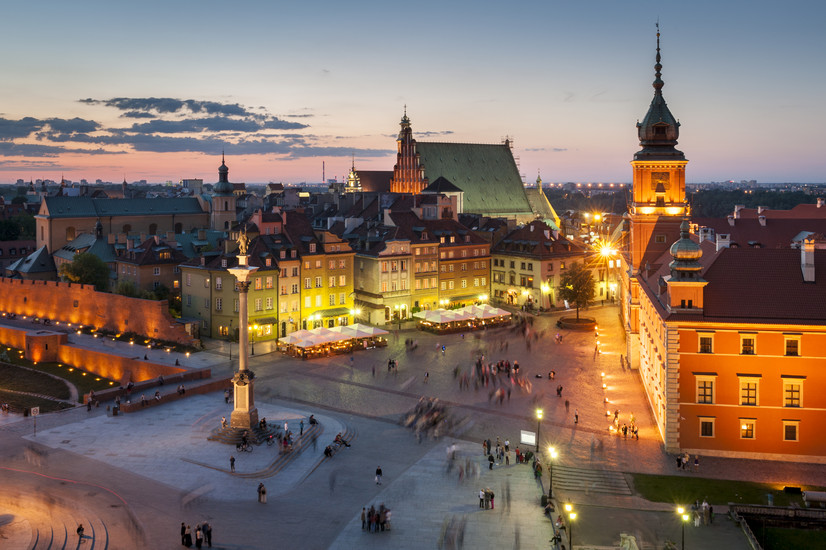
Name and Location: Royal Route in central Warsaw
History and Significance: This historic route connects Warsaw’s most important landmarks between the Royal Castle and Wilanów Palace. It was used by Polish kings and nobility.
What to Expect: Walk the route down the elegant boulevard Krakowskie Przedmieście, lined with churches, embassies and universities. Don’t miss historic squares and landmarks.
Visitor Information: Follow the signed route on foot. Guided walking tours available. Close to central Warsaw hotels and restaurants.
Linking the Old Town and Royal Castle to the south, this historic thoroughfare takes visitors past some of Warsaw’s most important landmarks and attractions. Must-see sights include St. Anne’s Church, the Presidential Palace, Saxon Garden, and Zachęta National Gallery of Art.
The scenic stroll can take a full day when accounting for extended stops at each destination along the route. It provides an excellent orientation to Warsaw by linking some of the city’s most significant places.
See Warsaw From Above at the Palace of Culture and Science
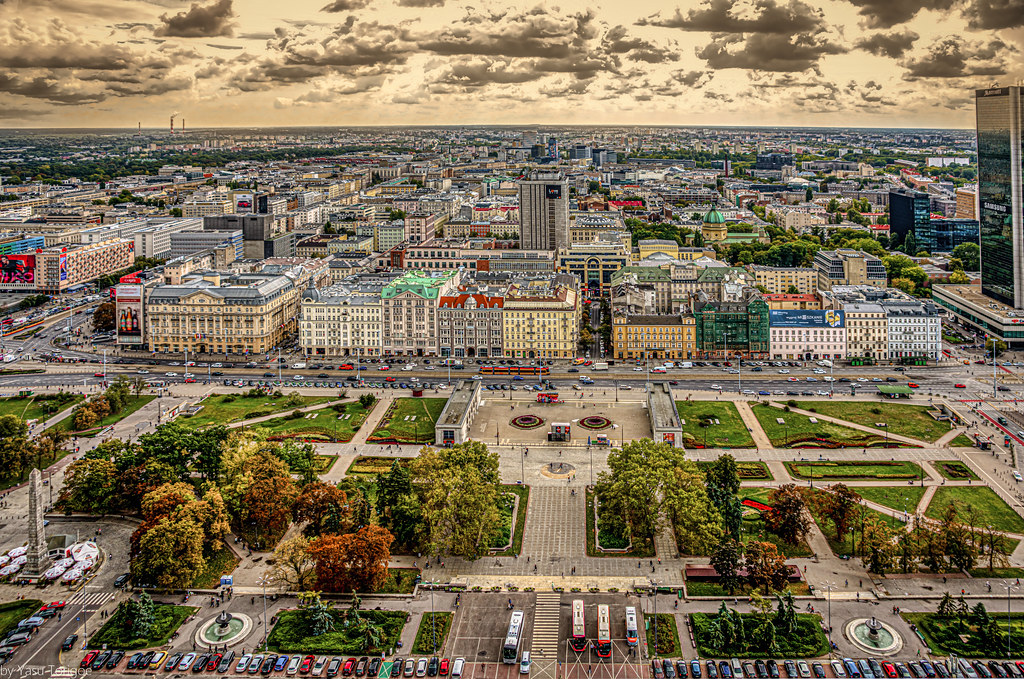
Name and Location: Palace of Culture and Science in central Warsaw
History and Significance: This imposing Stalinist skyscraper from 1955 offers panoramic city views from its 30th floor terrace. At 237m it’s Poland’s tallest building.
What to Expect: Ride the high-speed elevators up for unmatched views. Visit the museum, theaters, and eateries inside. The modernist architecture is impressive.
Visitor Information: Terrace open daily 10am-8pm. Admission 12 PLN. Located next to the central train station. Hard to miss!
Built in 1955 as a “gift from Stalin,” this imposing Socialist Realist skyscraper is the tallest building in Poland. The controversial structure is loved and hated in equal measure by locals, but provides visitors with a stunning 360-degree panorama of Warsaw from its 30th-floor observation deck.
The Palace of Culture also houses museums, theaters, cinemas, shops, and restaurants, making it a top attraction for visitors.
Explore Łazienki Park and Visit the Palace on the Water

Name and Location: Łazienki Park, Warsaw, Poland
History and Significance: These beautiful gardens feature neoclassical palaces, pavilions, and the iconic Palace on the Water built for a Polish king in the 1700s.
What to Expect: Stroll through gardens, tour palace interiors, and take a boat ride to the palace. Don’t miss watching the Chopin monument musical fountain show.
Visitor Information: Open daily 9am-dusk. Free park entry, palace tours around 20 PLN. Located south of Warsaw city center.
This lush 76-hectare park contains elegant palaces, mansions, pavilions, water features, and sculpture gardens, providing an oasis in the city. The focal point is the Palace on the Water, an immaculate late-18th century structure that sits in the middle of a lake and channels Versailles.
Visitors can tour the magnificent interior of the palace and stroll through the sprawling grounds, admiring the peacocks and fade gardens along the way.
Tour Frederic Chopin Museum
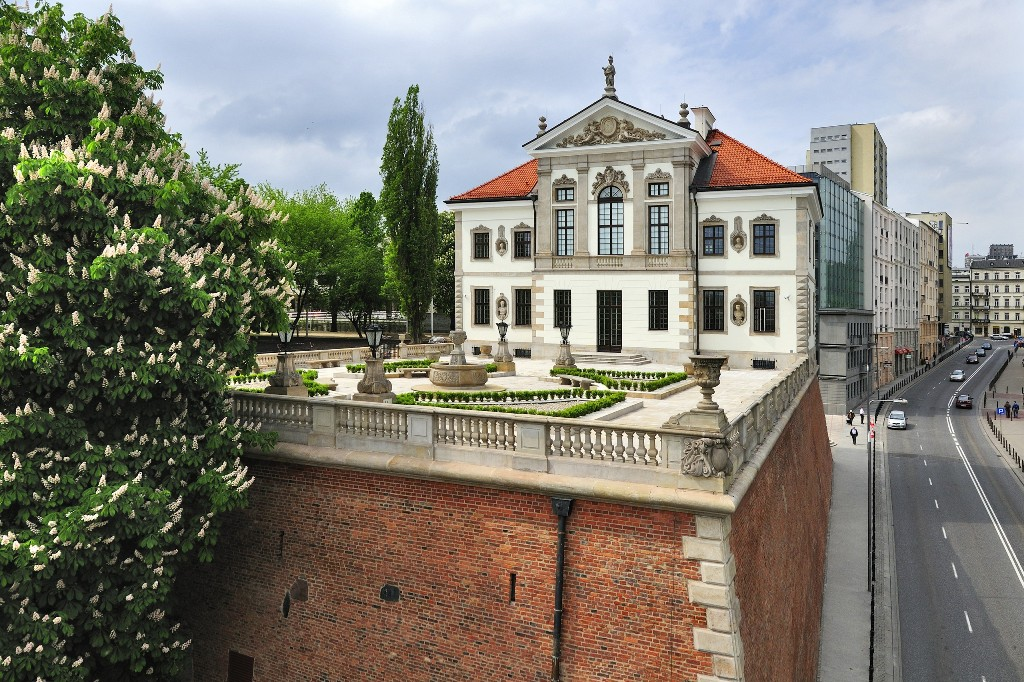
Name and Location: Chopin Museum in central Warsaw
History and Significance: This museum celebrates Poland’s most famous classical composer. The high-tech exhibits house original scores, letters, and Chopin memorabilia.
What to Expect: Learn about Chopin’s life via multimedia displays. Listen to concert recordings. Don’t miss the chance to sit at an interactive piano.
Visitor Information: Open Tuesday-Sunday 11am-8pm. Timed tickets ~22 PLN. Next to the Royal Baths Park, city center.
Occupying a restored Baroque palace, this modern museum celebrates Poland’s famous composer Frederic Chopin with interactive exhibits and hundreds of artifacts. Visitors gain insight into Chopin’s life from letters, musical manuscripts, personal belongings, paintings and sculptures.
The museum recaptures the atmosphere of a 19th century European salon and showcases his enormous musical legacy through listening stations. A must-visit for music lovers.
See Warsaw History in Miniature at the Museum of Warsaw
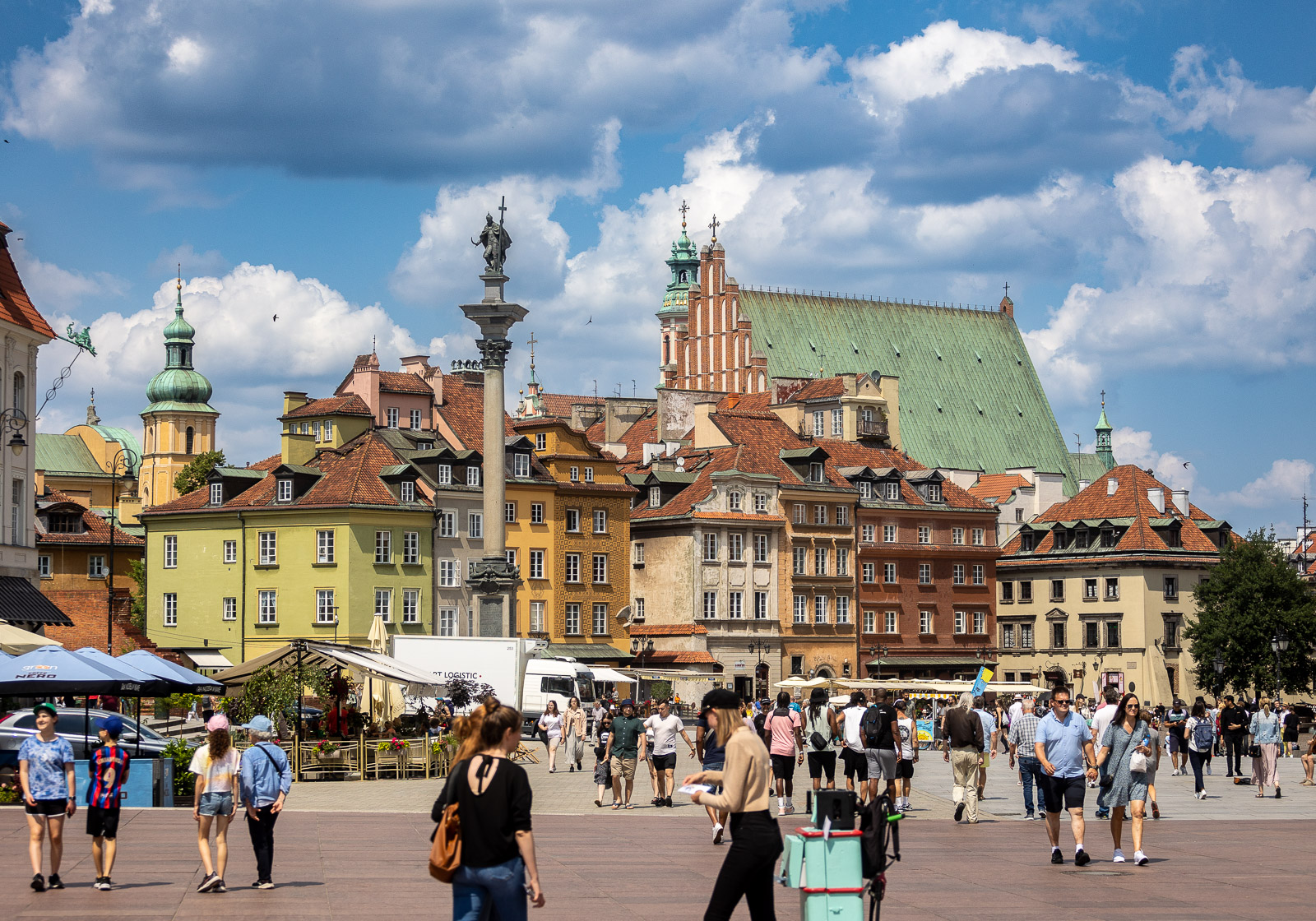
Name and Location: Museum of Warsaw in the Old Town
History and Significance: This interactive museum uses a detailed miniature model of the city to tell the history of Warsaw from the Middle Ages to today.
What to Expect: Marvel at the large model covering over 70,000 buildings. Use multimedia guides to learn about Warsaw’s changing landscape over centuries. Don’t miss this unique perspective.
Visitor Information: Open daily 10am-6pm. Admission around 14 PLN. Located in central Old Town.
Using a giant interactive model as its focal point, this museum vividly recreates the history of Warsaw from medieval origins to its near complete destruction during WWII. The expansive model details Warsaw’s evolving urban fabric, historic events, and changing architecture.
Complementing artifacts, paintings, films, and audio also tell Warsaw’s tumultuous story. The museum provides excellent context before exploring the historic sights of today’s city.
Wander the Vibrant Old Praga Neighborhood

Name and Location: Old Praga district, Warsaw
History and Significance: Located across the Vistula River, working class Praga preserves historic architecture and a lively local vibe with hipster cafés, clubs, and art galleries.
What to Expect: Explore the historic streets, creative streetart, unique boutiques, and atmospheric bars and bistros off the tourist track. Don’t miss the neo-Gothic St. Florian’s Cathedral.
Visitor Information: Accessible by metro, tram, or footbridge from central Warsaw. Historic area is walkable and safe.
Located across the river from the Old Town, the gritty district of Praga offers an alternative glimpse into Warsaw life. The historic neighborhood still retains its raw post-industrial character and is filled with historic churches, punky bars, indie galleries, street art, and Bohemian cafes.
Soho Factory is a maze-like complex with artisan shops and eateries. Neon Side is a “museum of neon lights” created from old signs. Różycki Bazaar is a bustling market hall with food vendors.
Get Active in Pole Mokotowskie and Łazienkowski Park

Name and Location: Pole Mokotowskie Park and Łazienkowski Park in Warsaw
History and Significance: These two urban green spaces offer facilities for sports, recreation, and relaxation right in the city center.
What to Expect: Jog, bike, play sports, work out at outdoor fitness areas. Take young kids to playgrounds. Don’t miss the peacock island at Łazienki!
Visitor Information: Both parks open daily dawn to dusk and are free to access. Pole Mokotowskie metro accessible.
These two immense adjoining parks offer plentiful green space for recreation, relaxation, and outdoor events in Warsaw. Covering over 116 hectares, Pole Mokotowskie is the most popular city park with tree-lined paths, a decorative pond, sports fields, and gardens.
The neighboring Łazienkowski Park contains a classicist palace, peacock island, and fields for football and Frisbee. The parks host open-air concerts, festivals, sporting events, and farmers markets throughout the year.
Explore Trendy Neighborhoods for Eats and Nightlife
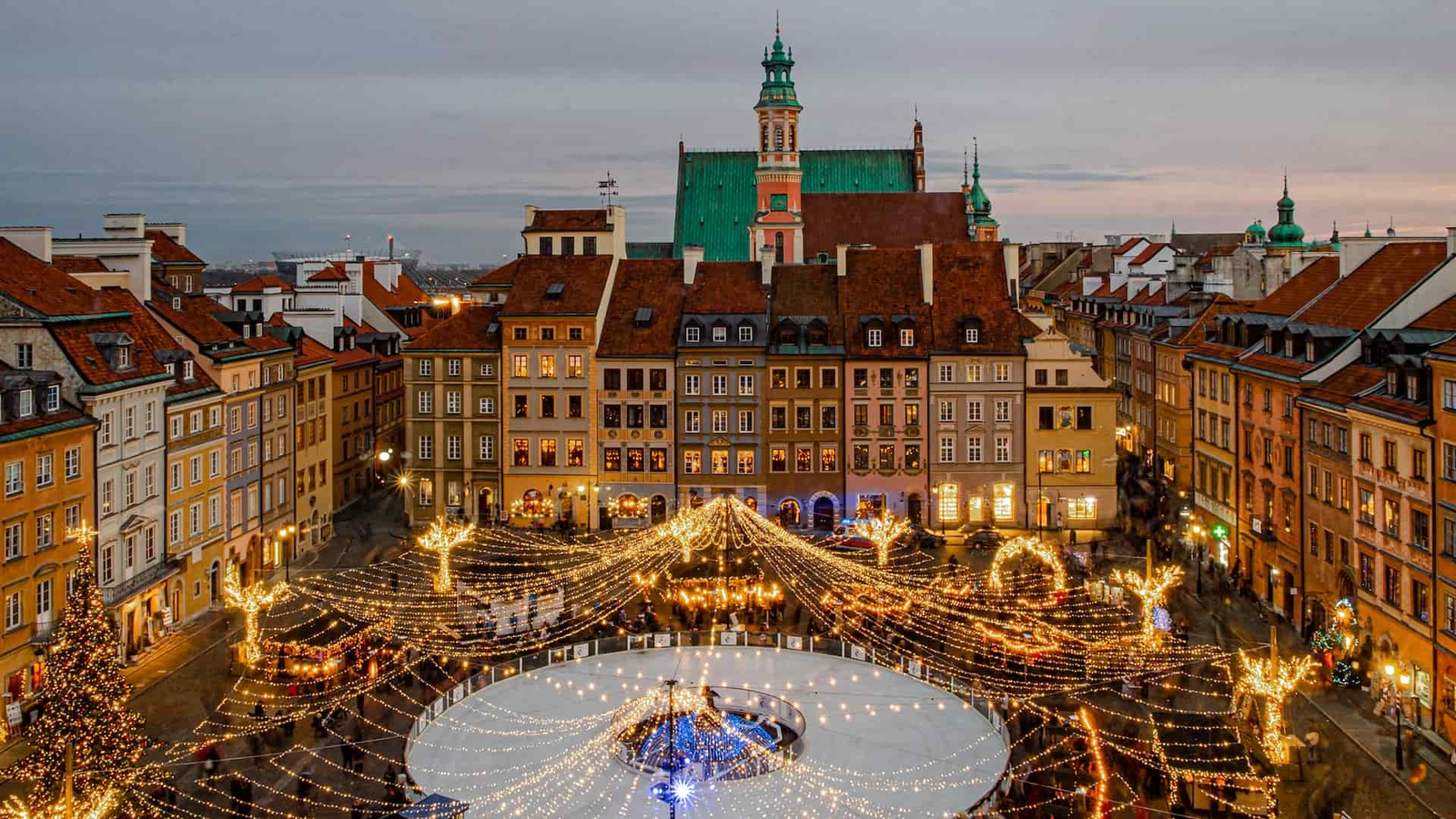
Name and Location: Saska Kępa, Powiśle, and Mokotów districts in Warsaw
History and Significance: These neighborhoods offer hip, upscale bars, cafes, restaurants, and boutiques in both vintage and modern architectural settings.
What to Expect: Bar- and cafe-hop through the trendy streets. Have an artisanal cocktail or third-wave coffee. Don’t miss the unique shops and people watching.
Visitor Information: Most spots open late into the evening. Saska Kępa and Powiśle located across the river from central Warsaw.
In addition to the Old Town, Warsaw has several revitalized neighborhoods buzzing with trendy bars, innovative eateries, and nightlife options. Praga District has an edgy-hipster vibe with industrial loft clubs and craft breweries.
Saska Kępa has intimate riverside cafes and leafy squares. Mokotów has vibrant sidewalk bistros and cocktail bars. Near Savior Square is filled with hole-in-the-wall restaurants and pulsing dance clubs.
Attend a Festival or Market
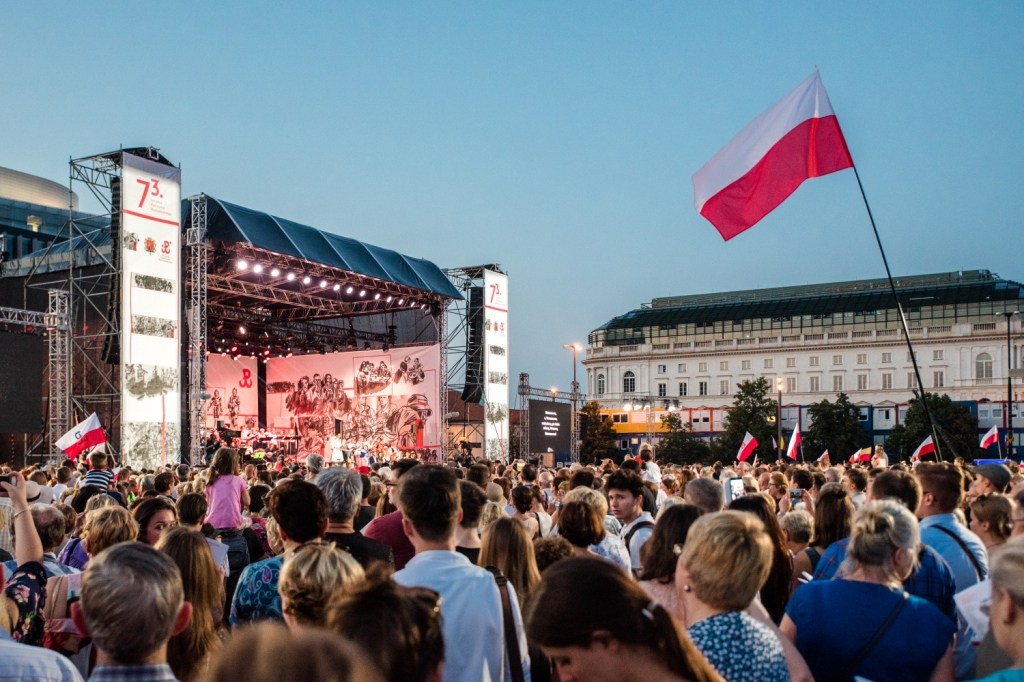
Name and Location: Various locations in Warsaw
History and Significance: Warsaw hosts many lively festivals for music, food, culture, and holidays year-round. Outdoor markets offer local goods.
What to Expect: Savor Polish food and crafts. See concerts and performances. Don’t miss unique events like the Neon Museum Festival, Jazz Jamboree, or Chopin concerts.
Visitor Information: Check online event listings. Major festivals centered in and around Old Town. Markets popup in parks and plazas.
Warsaw hosts a packed calendar of annual festivals, concerts, and markets, especially during summer. The open-air Jazz on the Odra Festival in August takes place on the riverfront with multiple stages.
The Warsaw Film Festival screens over 100 films from around the world each October. Christmas markets in the Old Town Square offer caroling, gifts, and traditional foods in December. Year-round, there’s always an interesting event happening somewhere in Warsaw.
Marvel at Wilanów Palace and Gardens
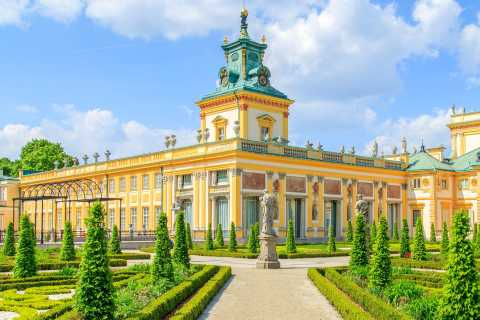
Name and Location: Wilanów Palace Grounds, Warsaw
History and Significance: Wilanów Palace, the “Polish Versailles,” was constructed in the 17th century and houses royal apartments, gardens, pavilions, and a museum.
What to Expect: Tour the elegant palace rooms and Royal Art Gallery. Wander the baroque gardens and lake. Don’t miss the unique Poster Museum in the palace orangerie.
Visitor Information: Grounds open daily 9:30am-dusk, museum hours vary. Admission around 20-25 PLN. Reach via taxi, metro line 2.
Considered a masterpiece of Baroque architecture, this 17th-century royal palace located just outside Warsaw reflects the splendor of the Polish monarchy.
Visitors can tour the lavish palace apartments and royal galleries before exploring the vast gardens and park with picturesque temples, statues, ponds, and follies. Concerts featuring music from Chopin and Mozart also take place in the Orangery on summer evenings.
Enjoy Pierogi at Traditional Milk Bars
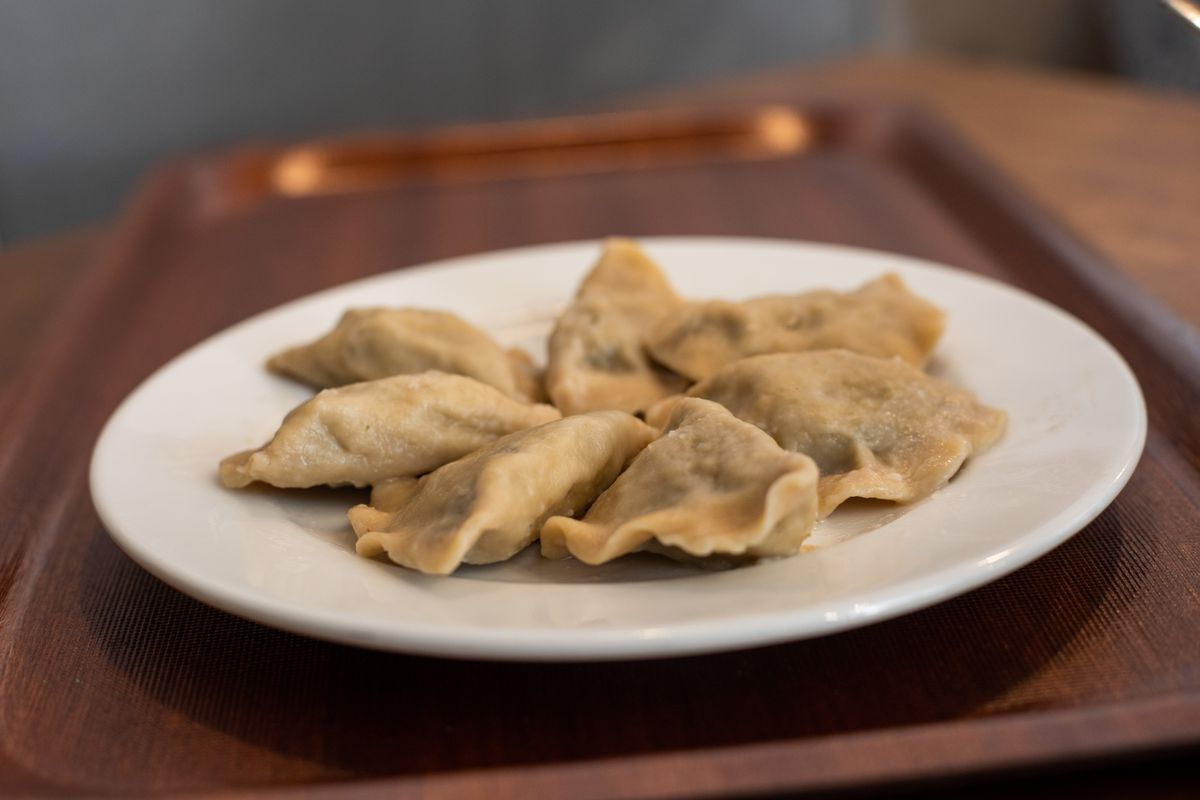
Name and Location: Milk bars throughout Warsaw
History and Significance: These cafeteria-style eateries have served inexpensive Polish food since communist times. Pierogi dumplings are the staple.
What to Expect: Try a variety of filled pierogi, borscht, schnitzel and more. Dine elbow-to-elbow at shared tables. Don’t miss the retro vibes. Cash only.
Visitor Information: Long hours daily. Popular options downtown include Milkbar Tomasza and Bar Mleczny. Budget friendly!
For an authentic dining experience, visit Poland’s iconic retro milk bars that serve hearty traditional foods, like pierogi dumplings. Despite the name “milk bar,” these cafeteria-style eateries originated in the communist era but also continue today.
Popular options in Warsaw include Rusałka, Familijny, and Bar Mleczny. Try the house special pierogi like sauerkraut and mushroom, meat, spinach, or fruit-filled. The milk bars provide a budget-friendly culinary immersion.
Tour the Warsaw Zoo
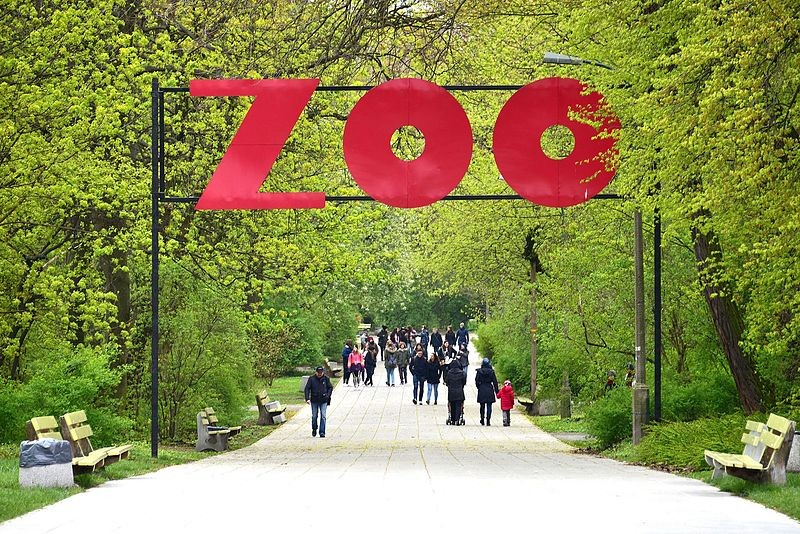
Name and Location: Warsaw Zoological Garden in central Warsaw
History and Significance: Founded in 1928, Warsaw Zoo houses over 5000 animals across a sprawling, wooded campus in the city center. A cultural institution and conservation site.
What to Expect: Observe exotic animal exhibits including elephants, hippos, polar bears and more up close. Ride the cable car over the grounds. Don’t miss the beautiful artificial mountain.
Visitor Information: Open daily 9am-7pm. Tickets ~20-25 PLN. Access via bus or metro to Pole Mokotowskie stop.
Opened in 1928, the Warsaw Zoo located in central Mokotów is a 20-hectare green space that’s home to over 4,000 animals representing nearly 500 species. It offers fun family-friendly activities like the daily Animal Feeding Show, night safaris to observe nocturnal creatures, and opportunities for Zoo Camp experiences.
Visitors of all ages will enjoy seeing exotic animals like giraffes, tigers, gorillas, polar bears, and more up close in naturalized habitats.
See the Jewish History of Warsaw

Name and Location: Jewish sights in Warsaw
History and Significance: Warsaw was once a major European center of Jewish culture. Key sites commemorate Jewish life, the ghetto, and the Holocaust.
What to Expect: Visit the Jewish Cemetery, Museum of the History of Polish Jews, Warsaw Ghetto sites and Umschlagplatz memorial. Educational and poignant.
Visitor Information: Museum and cemetery in city center. Warsaw ghetto area in Muranów district, metro accessible. Guided tours available.
Before WWII, Warsaw had one of Europe’s largest Jewish populations, which tragically was almost wiped out entirely in the Holocaust.
The city is still rebuilding its Jewish community, but visitors can learn about its poignant history at sights like the Warsaw Jewish Cemetery, POLIN Museum of the History of Polish Jews, Warsaw Rising Monument, and the Warsaw Ghetto area. These places commemorate the lives, culture, and tragedy inflicted on Warsaw’s Jews across centuries.
Relax at a Riverside Beach Area

Name and Location: Saska Kępa and Poniatówka beach areas in Warsaw
History and Significance: These popular seasonal hangouts on the Vistula River offer swimming, sports, dining, and lounging within the city.
What to Expect: Swim in the river or just relax on the sand. Beach bars and clubs come alive at night. Don’t forget your swimsuit and sunscreen!
Visitor Information: Lifeguarded swimming June-August. Access via footbridge or water taxi from the Old Town. Pubic transit accessible.
When ready to unwind on a sunny day, Warsaw has a several urban beach areas along the Vistula River during summer months. Head to Ponle Mokotowskie for beach chairs, ping pong, and volleyball by the water.
Posto della Fontana has lounge chairs, a small swimming area, and weekend DJ parties. Copernicus Beach Club is a full service oasis with lounge chairs, umbrellas, beach bar, restaurant, and open air cinema. There’s no shortage of ways to chill out riverside on hot days.
Conclusion
With its layered history and dynamic energy, Warsaw offers something for all travelers, whether you are looking to understand its storied past, experience cultural attractions and events, dine at trendy eateries, or simply unwind in an urban green space. Use this list of 15 things to see, do, and explore to make the most of your visit to Poland’s charismatic capital.
From the monumental Palace of Culture and Science to cozy retro milk bars to riverside lounging, Warsaw provides diverse and memorable experiences. Let this dynamic Eastern European city surprise and captivate you when visiting in 2024.


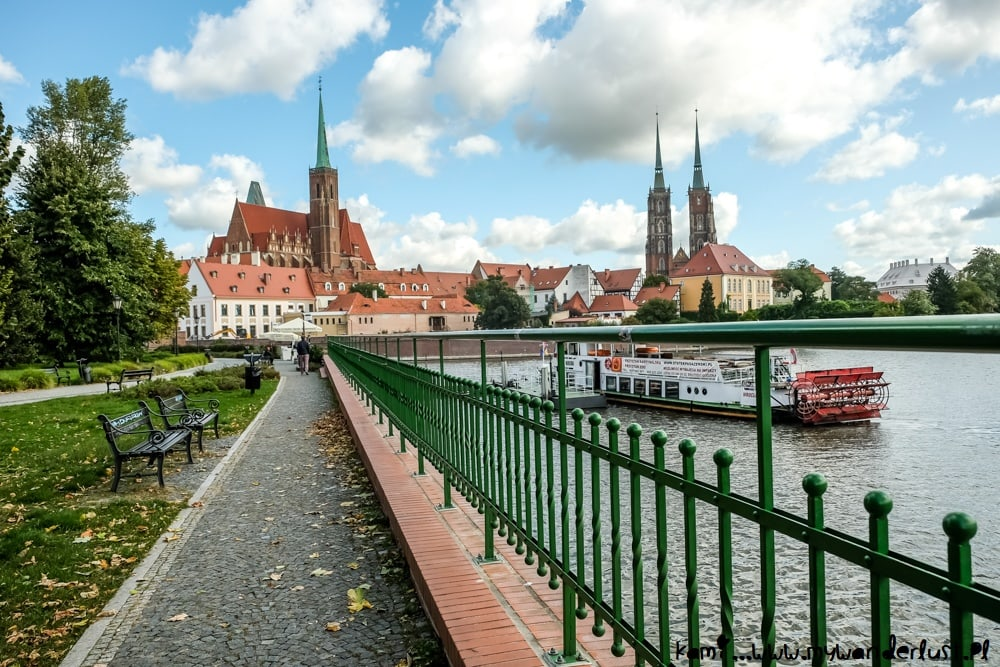
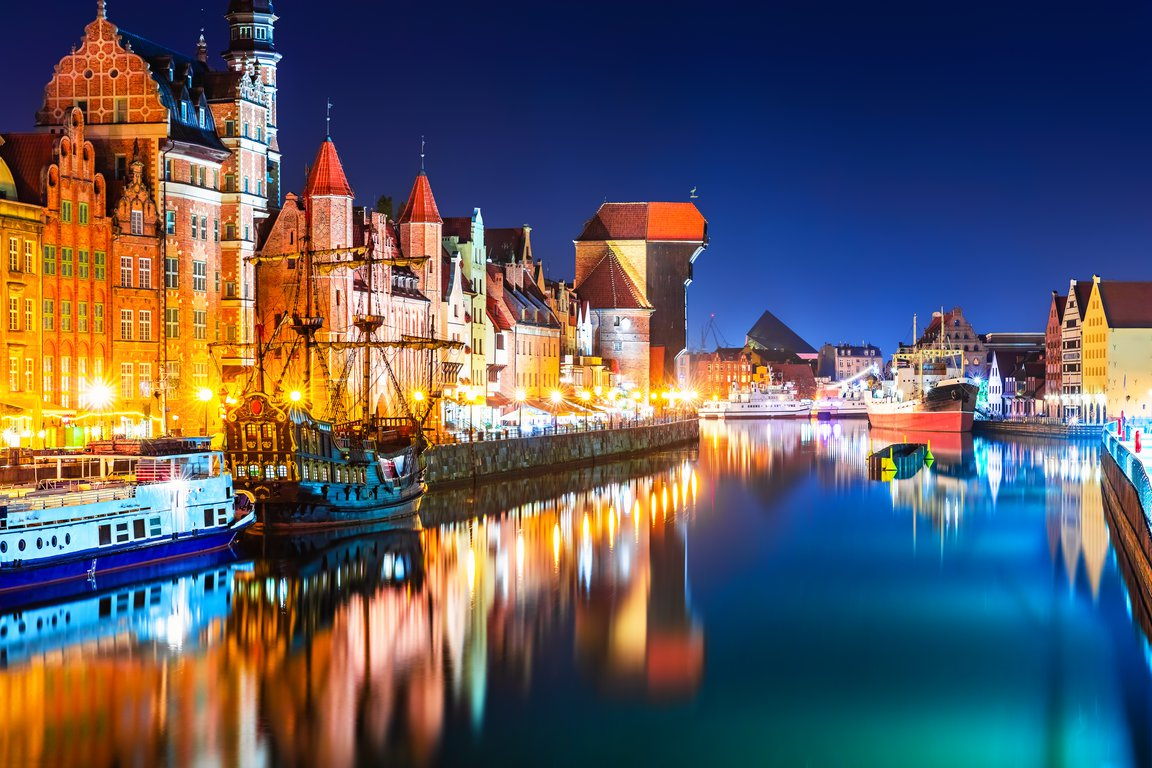

Join the Conversation